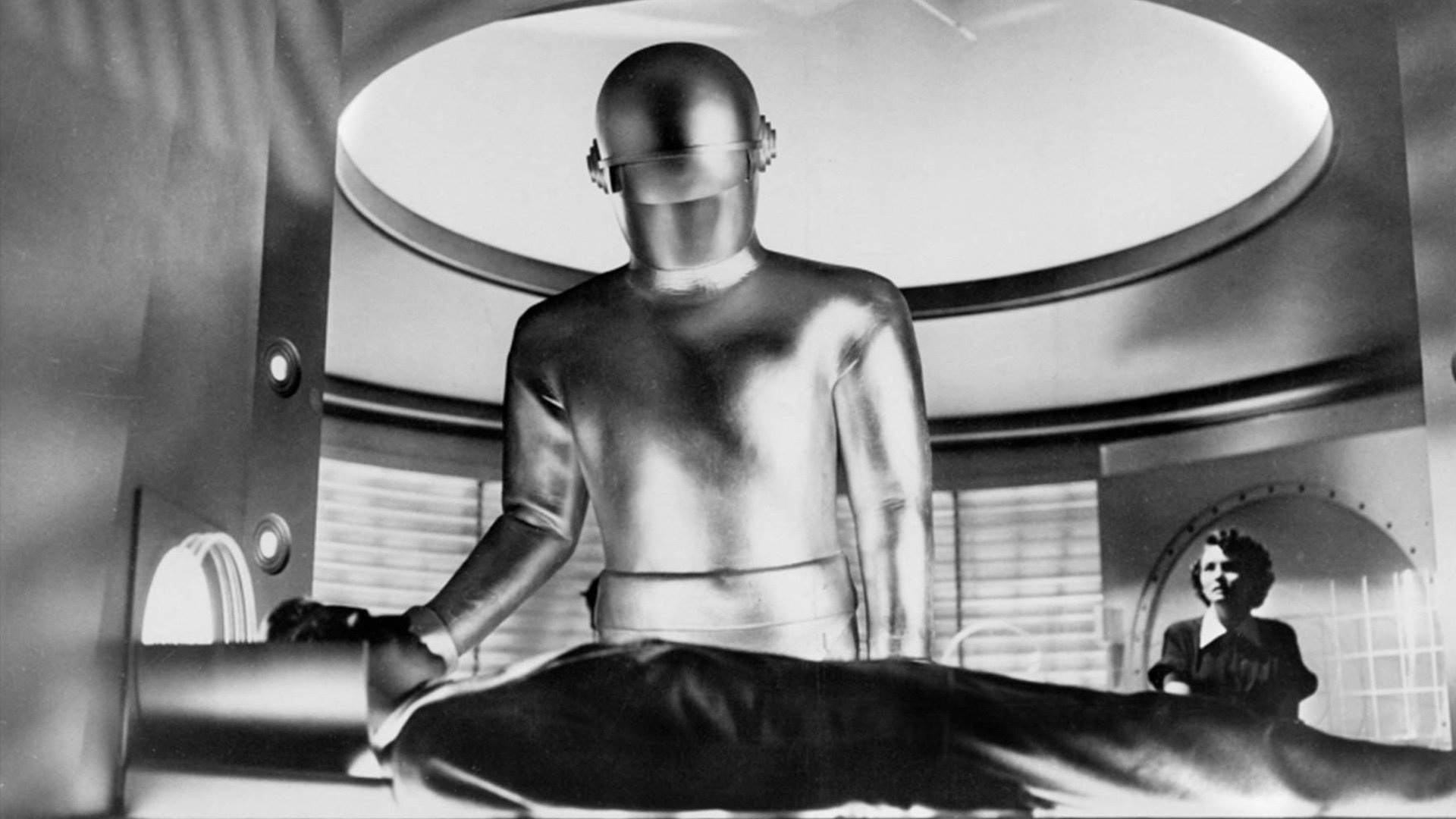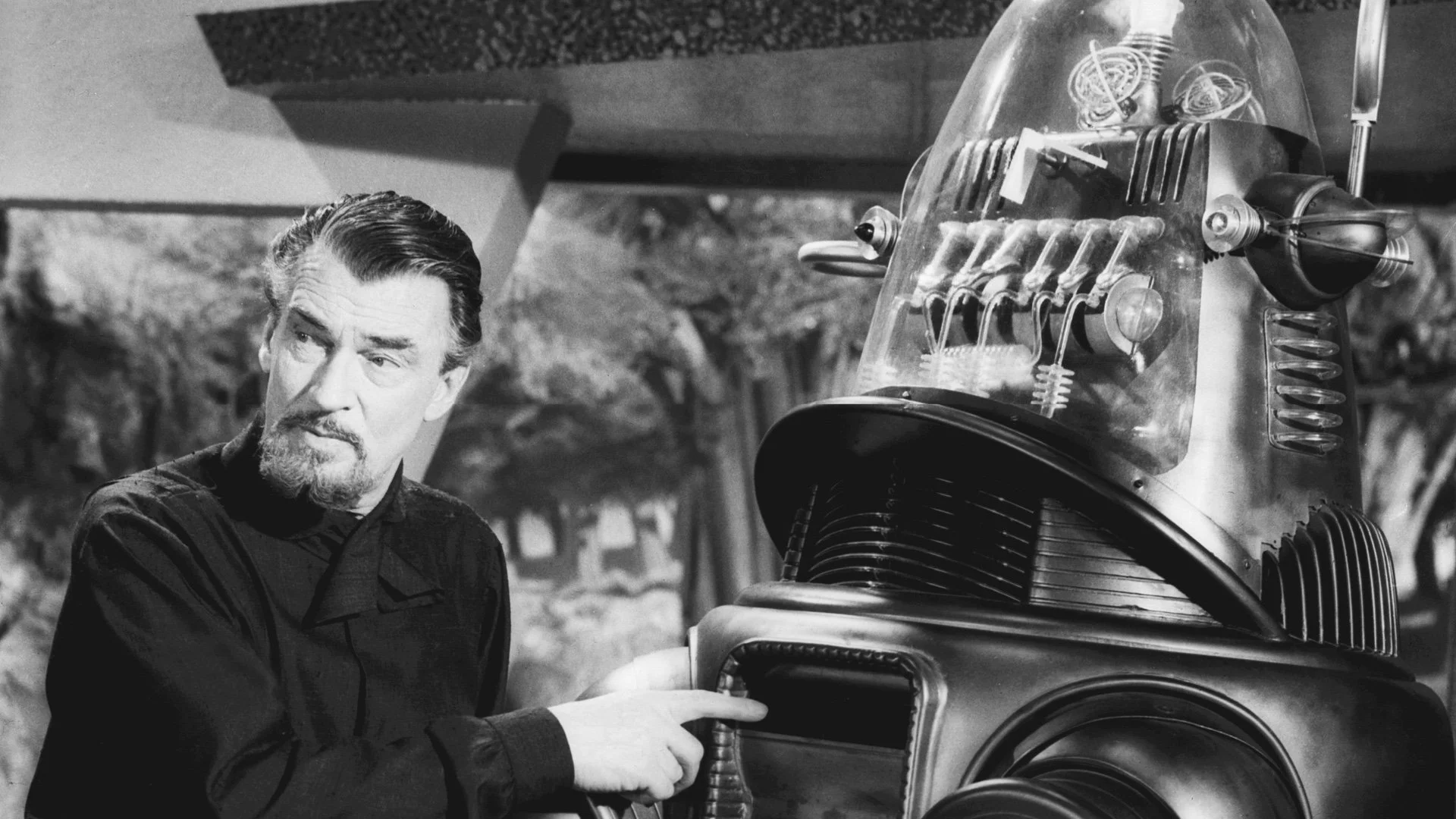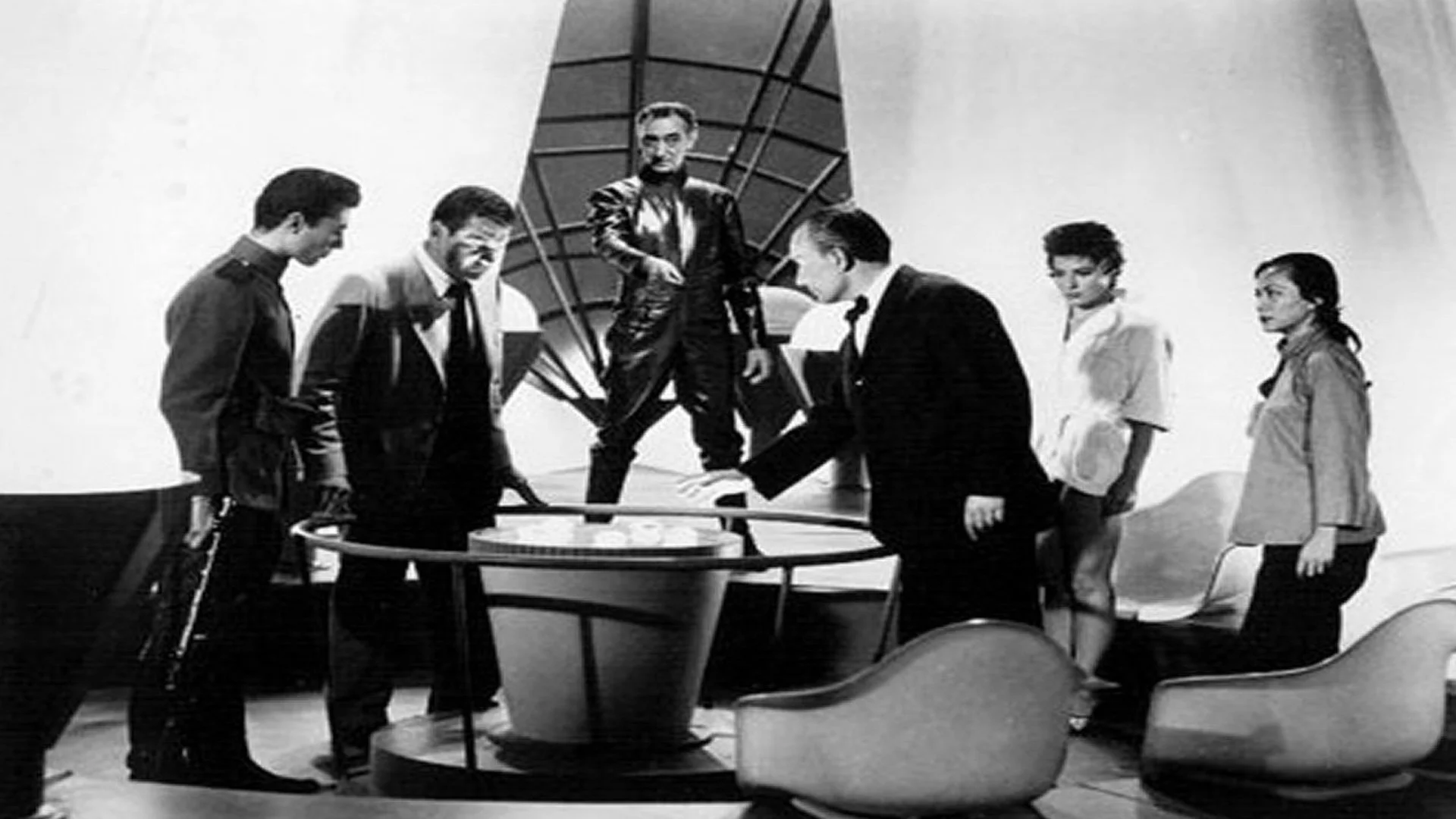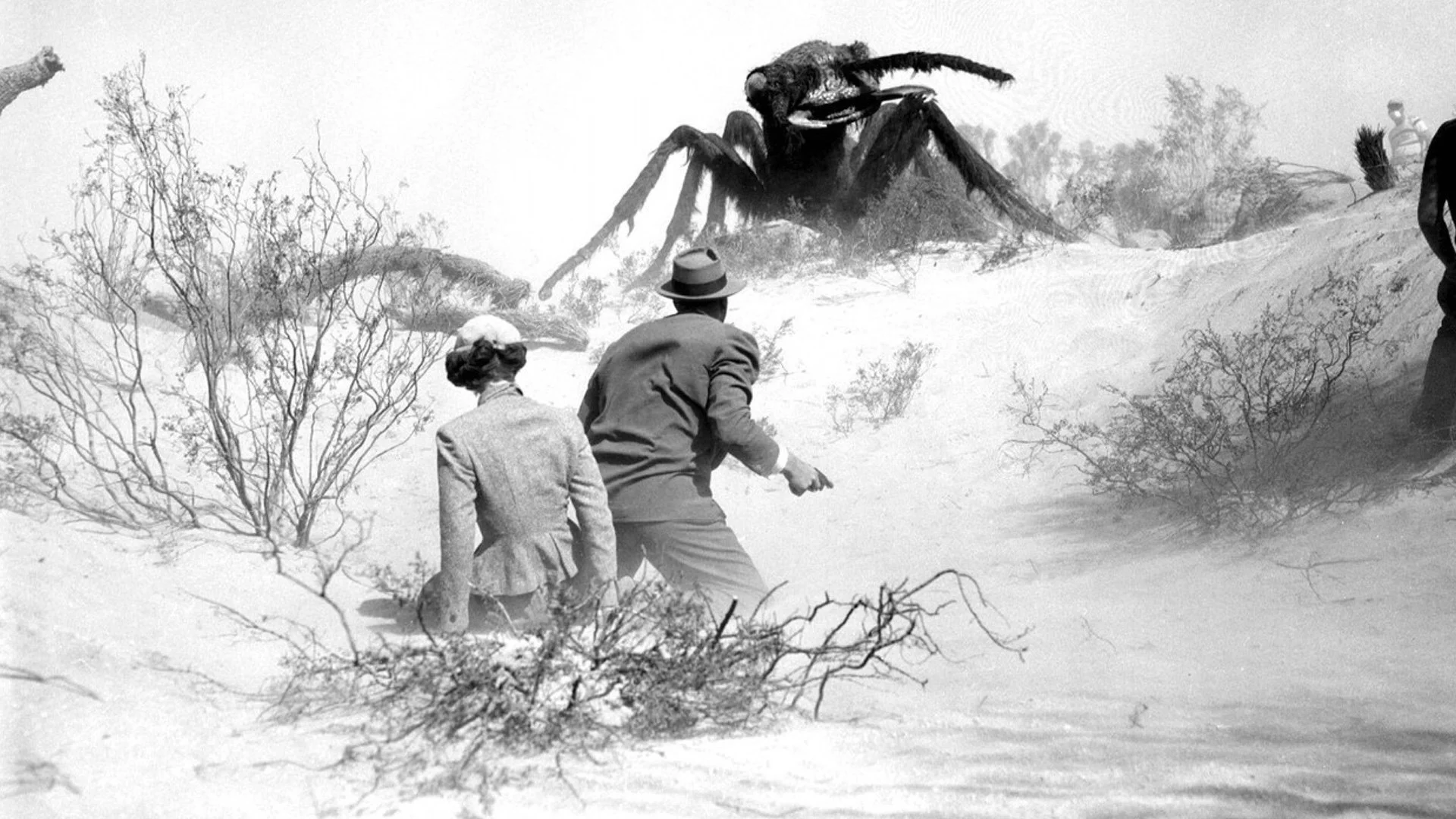The 1950s: A Decade of Out-of-This-World Sci-Fi Movie Masterpieces
If you’re a sci-fi fanatic, then there’s no doubt you’re aware of the awesome impact the 1950s had on the genre. During this decade, the sci-fi world was taken by storm with a series of groundbreaking films that pushed the boundaries of imagination and set the stage for generations to come. These ten essential must-watch sci-fi films of the 1950s are not just mere entertainment but cultural milestones that have shaped the way we think about the future.
It’s time to immerse yourself in the mind-bending world of 1950s science fiction. These ten films are not only timeless classics, but they also helped set the foundation for the entire genre as we know it today. These are all incredibly fun movies to watch, and they were also made to say certain things about society. Many of these themes are still relevant today.
The Day the Earth Stood Still (1951)
The movie deals with themes such as peace, diplomacy, and the relationship between humanity and advanced civilizations. Additionally, the film's central message of the need for cooperation and understanding among nations is as relevant today as it was when it was made. The film also explores questions about the role of science and technology in society.
When a UFO lands in Washington, D.C., bearing a message for Earth's leaders, all of humanity stands still. Klaatu (Michael Rennie) has come on behalf of alien life who have been watching Cold War-era nuclear proliferation on Earth. But it is Klaatu's soft-spoken robot Gort that presents a more immediate threat to onlookers. A single mother (Patricia Neal) and her son teach the world about peace and tolerance in this moral fable, ousting the tanks and soldiers that greet the alien's arrival.
Forbidden Planet (1956)
A visually awesome and truly unique sci-fi adventure that explores the limits of the human mind. It also serves as a commentary on the disconnect between human technological progress and human moral progress.
The movie tackles universal themes such as the consequences of unchecked technological advancement, and the dangers of playing with unknown forces. Additionally, its visual effects and production design were groundbreaking for its time and continue to be praised for their impact on the science fiction genre.
In this sci-fi classic, a spacecraft travels to the distant planet Altair IV to discover the fate of a group of scientists sent there decades earlier. When Commander John J. Adams (Leslie Nielsen) and his crew arrive, they discover only two people: Dr. Morbius (Walter Pidgeon) and his daughter, Altaira (Anne Francis), who was born on the remote planet. Soon, Adams begins to uncover the mystery of what happened on Altair IV, and why Morbius and Altaira are the sole survivors.
The War of the Worlds (1953)
This movie explores the fear of the unknown and the potential consequences of contact with extraterrestrial life. The story also plays with humanity's reaction to a global crisis and the breakdown of social order, which remain relevant themes in modern times. Then there’s the fun idea of a technologically superior species invading and potentially destroying humanity.
Scientist Clayton Forrester (Gene Barry) and Sylvia Van Buren (Ann Robinson) are the first to arrive at the site of a meteorite crash. Soon after, an alien war machine emerges and begins killing at random. The Marines are called in, but they're no match for the aliens' force field. Forrester and Van Buren, however, are able to wound one of the creatures and procure a sample of its blood. They take it to Los Angeles where they hope, through testing, to be able to discover the aliens' weakness.
Invasion of the Body Snatchers (1956)
The movie addresses themes such as the fear of conformity and the loss of individuality, the danger of groupthink, and the dangers of giving up personal freedom for a false sense of security. The film also touches on issues related to the erosion of trust in institutions and the influence of media and propaganda. Additionally, I enjoyed the film's depiction of a society under attack from a mysterious and powerful force and it continues to captivate audiences and remains a relevant theme in science fiction.
In Santa Mira, California, Dr. Miles Bennell (Kevin McCarthy) is baffled when all his patients come to him with the same complaint: their loved ones seem to have been replaced by emotionless impostors. Despite others' dismissive denials, Dr. Bennell, his former girlfriend Becky (Dana Wynter) and his friend Jack (King Donovan) soon discover that the patients' suspicions are true: an alien species of human duplicates, grown from plant-like pods, is taking over the small town.
The Thing from Another World (1951)
The movie explores themes of fear and paranoia in the face of the unknown, the dangers of scientific discovery and experimentation, and the conflict between the military and scientific communities. The film also deals with the question of what it means to be human and the fear of the "other.” Then there’s the film's depiction of a small group of people facing a hostile and dangerous threat, and I loved the use of tension, suspense, and atmosphere to build a sense of unease and danger.
When scientist Dr. Carrington (Robert Cornthwaite) reports a UFO near his North Pole research base, the Air Force sends in a team under Capt. Patrick Hendry (Kenneth Tobey) to investigate. What they find is a wrecked spaceship and a humanoid creature (James Arness) frozen in the ice. They bring their discovery back to the base, but Carrington and Hendry disagree over what to do with it. Meanwhile, the creature is accidentally thawed and begins wreaking havoc.
The Incredible Shrinking Man (1957)
The movie explores the human condition in a rapidly changing world, as well as the dangers of technology and its impact on the natural world. The film is also a commentary on the relationship between science and spirituality, and the role of man in a larger universe.
While on a boating trip, Scott Carey (Grant Williams) is exposed to a radioactive cloud. Nothing seems amiss at first, but several months later Scott realizes that he's shrunk in height by several inches. He sees a doctor, who admits that he's baffled. As Scott continues to shrink, decreasing to three feet tall, he becomes bitter, and lashes out at his wife, Louise (Randy Stuart). He begins to fear a cure will never be found -- since even as he becomes a national sensation, he's still shrinking.
This Island Earth (1955)
The film deals with the dangers of unchecked technological progress, the search for knowledge and understanding, and the ethical implications of scientific discovery. The story explores a technologically advanced alien race seeking to save their civilization by enlisting the help of humanity and it raises questions about the responsibilities of harnessing great power, and the importance of cooperation and understanding between different cultures and civilizations.
Scientist Cal Meacham (Rex Reason) solves a mysterious puzzle that allows him access to a highly secretive program -- led by the mysterious Exeter (Jeff Morrow) -- that has assembled the world's greatest scientific minds in an attempt to quickly learn how to generate and store nuclear power. But with the help of fellow scientists Ruth Adams (Faith Domergue) and Steve Carlson (Russell Johnson), Meacham soon discovers that his host is not what he claims to be.
The Beast from 20,000 Fathoms (1953)
The film's central premise of a prehistoric monster being released from its Arctic hibernation and rampaging through a modern city speaks to anxieties about uncontrollable and threatening forces. This was a great giant monster movie from the 50s, and I don’t know a lot of people who have seen it, but it’s one that is definitely worth watching!
Near the Arctic Circle researchers detonate a nuclear device and unwittingly thaw a prehistoric beast frozen for millions of years. The monster leaves a path of destruction across eastern North America as it heads straight for New York City. When heavy artillery proves ineffective against the towering creature, scientist Tom Nesbitt (Paul Christian) concocts a radioactive formula to neutralize the beast -- and ace shot Cpl. Stone (Lee Van Cleef) will deliver it by grenade.
The Blob (1958)
The centers on a mysterious and rapidly growing blob entity that consumes everything in its path. The film's story deals with the exploration of the breakdown of social order and the difficulty of convincing authorities to take action, and it was just a super fun movie! I enjoyed how it blended elements of horror, science fiction, and comedy. The film's use of humor and lightheartedness, through its depiction of its characters and their interactions with authority figures, adds a layer of fun and levity.
A drive-in favorite, this sci-fi classic follows teenagers Steve (Steven McQueen) and his best girl, Jane (Aneta Corseaut), as they try to protect their hometown from a gelatinous alien life form that engulfs everything it touches. The first to discover the substance and live to tell about it, Steve and Jane witness the blob destroying an elderly man and grow to a terrifying size. But no one else has seen the goo, and policeman Dave (Earl Rowe) refuses to believe the kids without proof.
The 27th Day (1957)
The movie’s story centers on five individuals from different countries who have been given the power to destroy the world and it raises questions about the importance of making the right choices in the face of difficult and complex ethical dilemmas. The film explores the global consequences of personal actions and the film's depiction of the tension and suspense that arises when characters are faced with the opportunity to do great good or great harm makes it quite the intense horror movie.
An alien from a dying planet brings five average people from England, Germany, China, the Soviet Union and the United States onto its spacecraft. Each person is given a case containing vials that can destroy all life within a 3000-mile radius. They're told that the Earth will be spared complete destruction if all five can keep their respective governments from using the capsules for 27 days, but escalating Cold War tensions between the Americans and the Russians make that a difficult promise.
Them! (1954)
The film's central premise of giant mutated ants terrorizing a city speaks to anxieties about uncontrollable and threatening forces, which are universal and timeless concerns. Additionally, the film's exploration of the consequences of scientific experimentation and the relationship between humans and the natural world remains a relevant and timely theme in modern times.
While investigating a series of mysterious deaths, Sergeant Ben Peterson (James Whitmore) finds a young girl (Sandy Descher) who is unable to speak. As Peterson joins forces with FBI agent Robert Graham (James Arness) and scientist Dr. Harold Medford (Edmund Gwenn), he discovers that all the incidents are due to giant ants that have been mutated by atomic radiation. Peterson and Graham, with the aid of the military, attempt to find the queen ants and destroy the nests before the danger spreads.
These ten essential must-watch sci-fi films of the 1950s are a testament to the limitless power of the human imagination. They have inspired countless filmmakers, artists, and writers and will continue to captivate audiences for generations to come.











